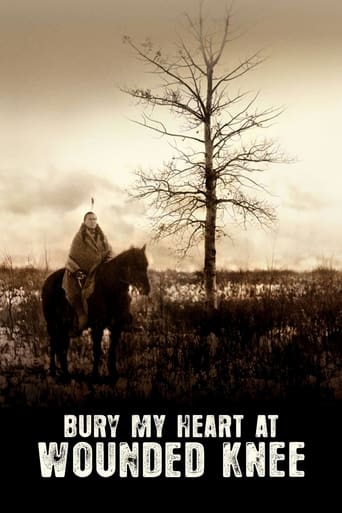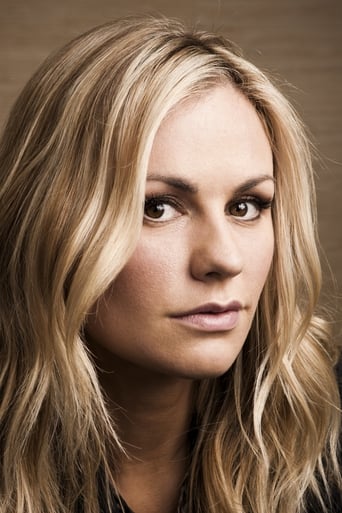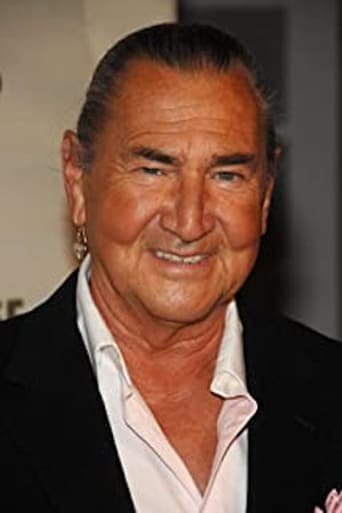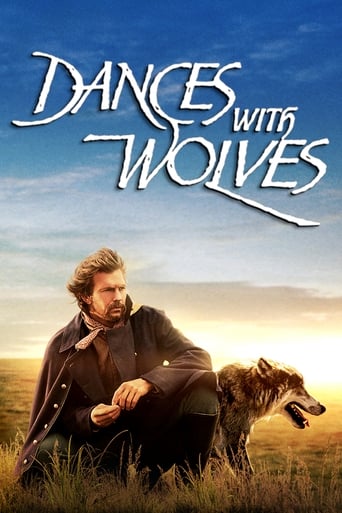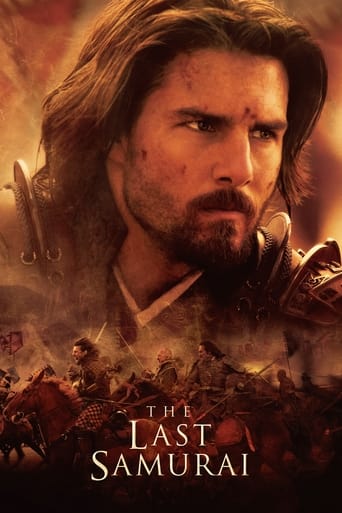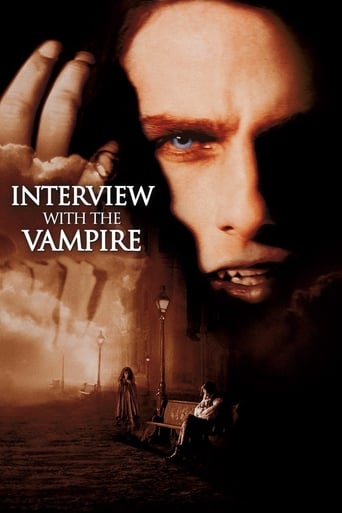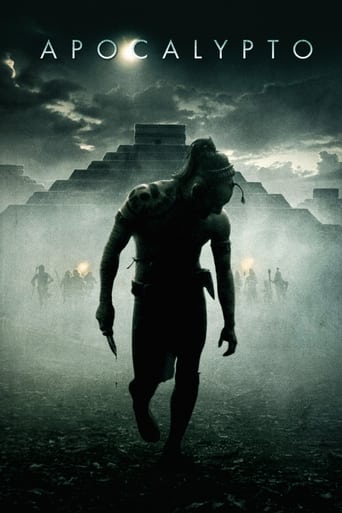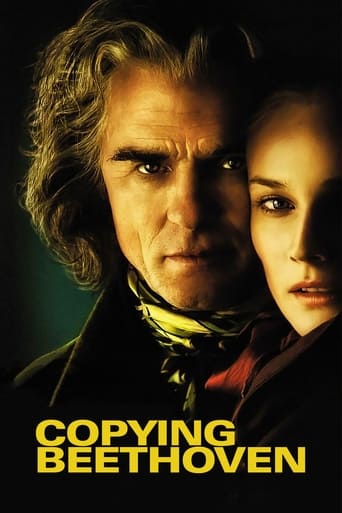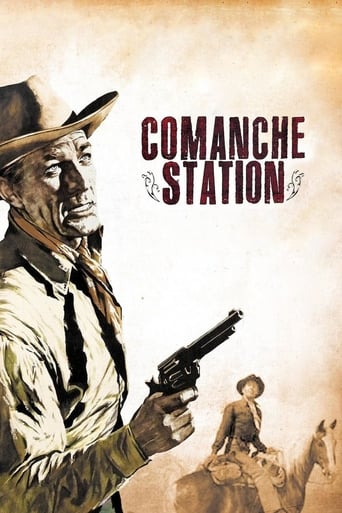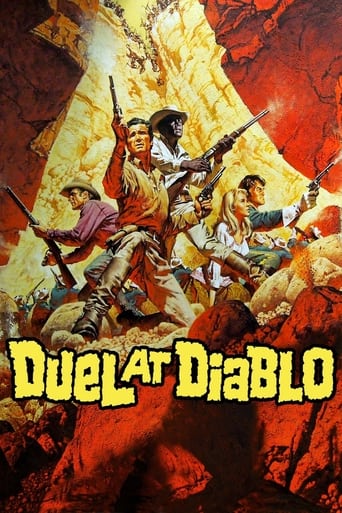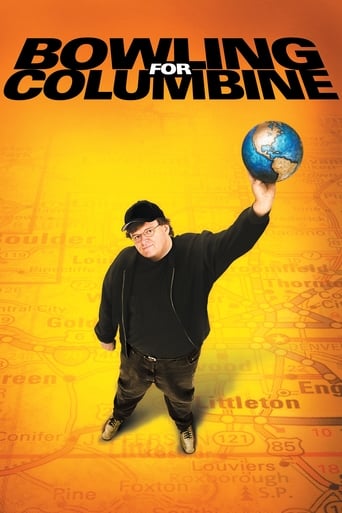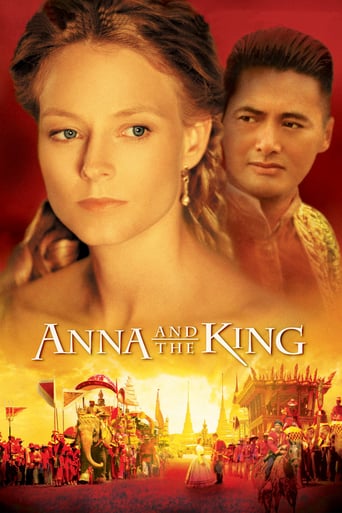Bury My Heart at Wounded Knee (2007)
Beginning just after the bloody Sioux victory over General Custer at Little Big Horn, the story is told through two unique perspectives: Charles Eastman, a young, white-educated Sioux doctor held up as living proof of the alleged success of assimilation, and Sitting Bull the proud Lakota chief whose tribe won the American Indians’ last major victory at Little Big Horn.
Watch Trailer
Free Trial Channels
Cast


Similar titles
Reviews
Overrated
When a movie has you begging for it to end not even half way through it's pure crap. We've all seen this movie and this characters millions of times, nothing new in it. Don't waste your time.
The story, direction, characters, and writing/dialogue is akin to taking a tranquilizer shot to the neck, but everything else was so well done.
Story: It's very simple but honestly that is fine.
I've studied the events that lead up to the Wounded knee massacre, and I have to say you have to give a hand to this film. They kept to the books for the most part, and 99% of the film is pretty much exactly what happened in real life. To understand that this happened in the year 1890 sure is disheartening, seeing as when you put it into a broad perspective, that wasn't that long ago. We all take for granted our core values and beliefs, and this film hits close to home. You feel empathy and heartbreak over what only one tribe of American Indians went through, you open your eyes to what happened to all of them as well.
Released to HBO in 2007, "Bury My Heart at Wounded Knee" is a historical Western based on several chapters of Dee Brown's book of the same name and details the last days of the Sioux Nation, culminating in the infamous massacre at Wounded Knee. Adam Beach plays Charles Eastman, a Dakota youth who is encouraged by his Christianized father to head east and become a doctor. During his stint as physician at Pine Ridge Reservation he meets and marries, Elaine Goodale (Anna Paquin). Eastman teams-up with Senator Henry Dawes (Aidan Quinn) to legally help the Native Americans. This includes the Dawes Act, which would ensure that every Indian family would own 160 acres of land. Within this framework the story of Sitting Bull (August Schellenberg) is told, including his death. Wes Studi appears briefly as Wovoka, a Northern Paiute spiritual leader and creator of the Ghost Dance. His messianic movement inspired the Natives, promising an end of their suffering under white rule.Every movie based on history mixes fact with fiction as filmmakers try to overcome the challenge of morphing complex real-life events into palatable cinema. So let's get the falsities out of the way: Charles Eastman never lived in the Native village near the Battle of the Little Bighorn as young brave Ohiyesa; Sitting Bull surrendered at Ft. Buford, not Standing Rock; lastly, Charles Eastman was not Dawes' associate in developing the Dawes Act.With that out of the way, what I like about this movie is how balanced it is as it shows both sides of the story. Here the Indians aren't portrayed as super-virtuous with nigh-Messianic powers (except for Wovoka, which is understandable) nor are the whites frothing with evil to massacre the Natives. This balance is perfectly portrayed in the excellent parley sequence between Sitting Bull and Col. Nelson Miles (Shaun Johnston) where honest and intense positions are shared. For instance, Miles argues that North America was anything but a peaceful paradise before Europeans arrived and that the Lakota Sioux conquered other tribes to acquire "their" land in the Black Hills. The Europeans were simply a confederation of several white "tribes" from across the great sea and were merely doing the same thing that Sitting Bull's tribe did – acquiring land from conquered peoples.Speaking of Sitting Bull, he's one of the most interesting and enigmatic Native characters seen in cinema. And it's a noteworthy performance by Schellenberg.The Wovoka sequence is another highlight where Wovoka (Studi) brings his prophecy and message of the Ghost Dance to the Black Hills Natives. He articulates his message in a hypnotizing manner accompanied by the sign language of the plains Indians. The irony is that, while Wovoka's vision inspires the Lakota and it replaces their suffering with hope & happiness, it only ends in death.Two great sequences occur in the final act: The accurately-depicted haunting death of Sitting Bull, which took place on December 15, 1890, at Standing Rock Reservation; and the titular massacre at Wounded Knee Creek on the Pine River Reservation two weeks later. Col. James Forsyth (Marty Antonini) says to Eastman, "We didn't fire first. I swear to Almighty God, we did not fire first," which is verified by history: Tensions mounted in the confrontation as Yellow Bird started to perform the Ghost Dance, informing the Sioux that their "ghost shirts" were bulletproof. Known troublemaker Black Coyote seemed to unintentionally trigger the massacre by refusing to give up his rifle; some say he was deaf and didn't comprehend the order. When two soldiers seized Black Coyote from behind, his rifle was discharged during the struggle. While this was happening, Yellow Bird threw dust in the air and several Lakota braves with concealed weapons threw aside their blankets and fired their rifles at the troops. The firing then became indiscriminate and the massacre entailed.While "Bury My Heart at Wounded Knee" is a television production, its quality is as good or better than many theatrical pictures. As my title blurb says, it's basically the sequel to 1991's "Son of the Morning Star": That movie ended with Custer's last stand whereas "Wounded Knee" begins with it. Furthermore, they're both televisions productions with the same grueling-realistic tone. Another good comparison is 1975's "I Will Fight No More Forever." It's also not far off in style and approach to movies like "Unforgiven" (1992), "Wyatt Earp" (1994) and "Open Range" (2003). If you're a fan of these types of Westerns be sure to check out "Bury My Heart at Wounded Knee." The film runs 133 minutes and was shot outside of Calgary, Alberta, Canada.GRADE: B+
First off, I haven't seen the production of Bury My Heart at Wounded Knee. But I read the book. Many years ago. But if this production is true to the book it will be a wake-up call for many. You'll come away knowing exactly what was done to the people of the First Nations. The false promises, outright lies, cruelty, deprivation forced on them. The grief of seeing your wife, husband, father, child...your entire family destroyed. To see land that had sustained your people for eons being taken over and divided up, destroyed, its animal life extinguished with no hope of recovery. And finally, to see the mountains those lands surrounded...mountains sacred to all the tribes and nations of your race...to see the faces of foreign leaders carved into those mountains. Those of you with an ability for true empathy might have an inkling of the despair and hopelessness felt by the people of the First Nations. The majority will feel bad for a short while and then continue with their lives as before. And for some, some will feel a burden on their soul the likes of which you will wish you had never known. You'll learn to live with it. I can promise you that. We whites have an amazing capacity for justifying what our race has done to others and living with its subsequent guilt. But how long can we do that? Injustices done in the past can't be erased. And the injustice to the First Peoples continues to this day. If racial memory is an actuality, how large a burden of guilt can we carry until our collective backs break from its weight?
I have no idea whether this is historically accurate, or, if I were a member of (Canada's) First Nations, to embrace or be offended by this portrayal of the time period, which, though the story of one Americanized Indian, is (given the title) really about the plight of America's first peoples and obviously told from a 21st Century perspective. Unlike Clint Eastwood's "Letters from Iwo Jima", it is truly a "white man's" perception. But, like Eastwood's "Outlaw Josey Wales", I was happy to embrace the intended sympathy for the characters. As a Canadian, I was also proud to see Adam Beach and Canada's Prairies represent an American history lesson. And, I must mention that, in addition to excellent cinematography, writing,and direction, what really made the movie for me was the soundtrack by George S. Clinton. Whether you have no interest in the story of this time period, or are finishing a Doctorate in Anthropology, I believe that you will be touched deeply in viewing this film.

